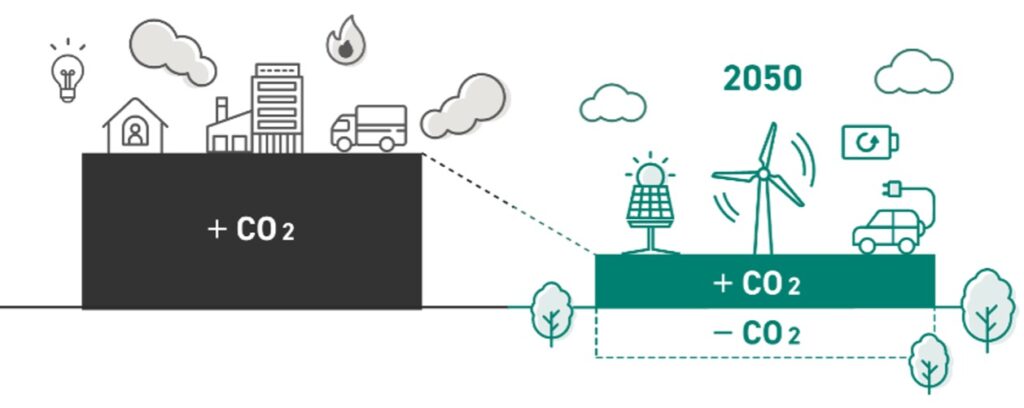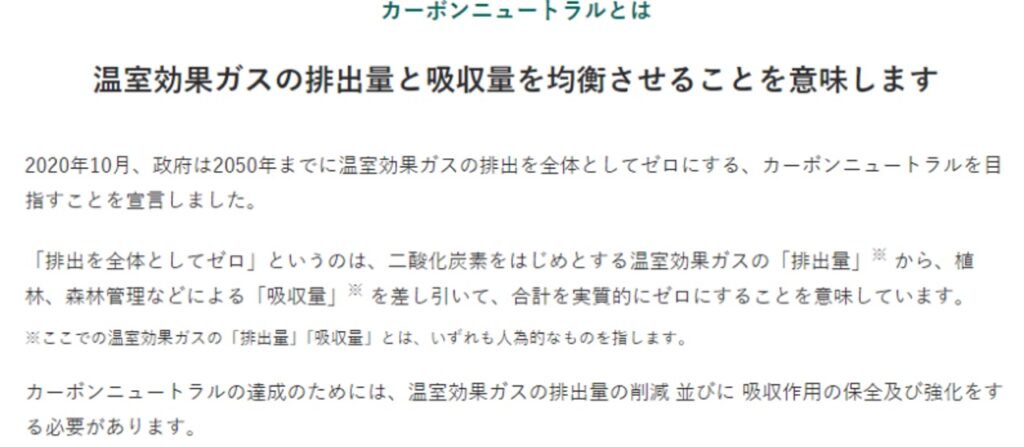Let's strive to achieve carbon neutrality by 2050 through new forest culture and technological innovation
Updated by Yasunao Kobayashi on June 06, 2025, 4:27 PM JST
Yasuhisa KOBAYASHI
Alpha Forum, Inc.
President of Alpha Forum, Inc. and Steering Committee Member of the Platinum Forest Industry Initiative. Ltd. in 2001, taking advantage of the company's venture support program. In September 2023, he received the Wood Use System Research Association Award.
We have 25 years to go until we achieve our promised carbon neutrality by 2050! We cannot achieve this goal by curbing CO2 emissions alone. Japan's current CO2 absorption is estimated to be about 160 million tons, assuming a ratio of 6:4 between forests and oceans. (Assuming that trees are growing 150 million cubic meters/year in forested green areas, this means CO2 absorption of about 100 million tons/year, or 0.83 tons/person/year). The per capita CO2 emission is about 8.6 tons/year. What to do with the excess of more than 7 tons/year?
First, emissions must be halved from the current level. Industry should shift to renewable energy and switch raw materials from fossil fuels to biomass. The distance goods and people are moved should be reduced as much as possible. In this way, the rationale for aiming for a "regional circular economy" can be realized once again. The transportation business, including imports and exports, has grown the current economy, but we should rethink local resources and food from both CO2 and cost perspectives. Office workers should also be constantly aware of and make efforts to reduce CO2 emissions from lighting, computer use, and train commuting. Many car commuters in rural areas drive alone, but CO2 emissions can be reduced by having two or three people riding with them on a similar commuting route.


The absorption in forested green areas can aim at more than twice the absorption capacity: trees grown for more than 50 years lose much of their CO2 absorption capacity ≒ decrease in trunk volume growth. Trees grow rapidly until about 40 years after planting ≒ growth. We need to plant trees. In addition to forests, they will be willing to "let us plant" for miscellaneous lands and abandoned lands (devastated farmlands). If we could plant as much as possible over the next 25 years, the CO2 absorption capacity of Japan's forested green areas would be doubled. As for broadleaf forests, there are areas that can be regenerated (sprouting and renewal), so let's just add our hands to the forested green areas with love.
CO2 emissions were halved from 8.6 tons/year/person to 4.3 tons/year/person, and forests and green spaces absorbed 1.66 tons/year/person of CO2, or 2.14 tons/year/person when combined with ocean absorption. This is still not enough.
What is the population of our country in 2050? According to the Ministry of Internal Affairs and Communications, the total population of Japan will be 95.15 million in 2050, a decrease of about 33 million (about 25.5%). According to METI statistics, Japan's total CO2 emissions in 2022 were 1.085 billion tons, so simply put, this is a 25.5% reduction, or 808.33 million tons per year, and if emissions can be halved, the total will be reduced to 441.6 million tons. The amount absorbed by forested green areas will be doubled, and when added to the ocean, the amount absorbed will be approximately 260 million tons. The gap between the two has narrowed considerably.
We are looking forward to the development of CCS (Carbon Dioxide Capture and Storage) and CCUS (Carbon Dioxide Capture, Utilization and Storage) technologies. However, how to control the storage stability risk and the reaction with hydrogen (endothermic reaction) when reducing oxidized substances? Can it really be industrialized?
Let's strive for carbon neutrality through innovative technological innovation and a "new forest culture of living with Satoyama". (President, Alpha Forum, Inc. and Yasunao Kobayashi, Steering Committee Member, Platinum Forest Industry Initiative)